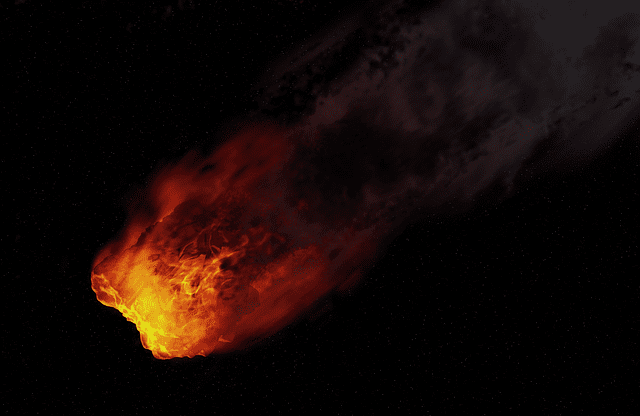60 meters wide. A 3.8% chance of a lunar strike. Billions in potential satellite damage. Here’s what NASA isn’t putting on the headlines.
hat’s Really Going On With Asteroid 2024 YR4?
Forget Hollywood-style doomsday fantasies. This one’s real—and it’s in motion.
Asteroid 2024 YR4, discovered late 2024, was originally thought to be 40 meters wide. Now? Thanks to new infrared imaging from the James Webb Space Telescope (JWST), scientists confirm it’s actually 60 meters across—about the size of Nelson’s Column or a 20-story building.
That’s not small. And the math just got a lot more serious.
How Close Will 2024 YR4 Get?
-
Closest approach: December 22, 2032
-
Previous Earth impact risk: 3.1%
-
Revised Earth impact risk: < 0.001% (ruled out for now)
-
Current Moon impact risk: 3.8%
So Earth is safe… for now. But the Moon? Not so lucky.
Why a Lunar Collision Still Matters
Sure, the Moon doesn’t have cities. But it does have satellites, future habitats, and it plays a major role in Earth’s gravitational balance. A hit from a 60-meter asteroid could:
-
Throw high-velocity debris into space
-
Disrupt lunar missions and comms satellites
-
Damage orbiting infrastructure around Earth
-
Potentially trigger a cascade of space junk
Even NASA confirmed: if 2024 YR4 hits the Moon, it won’t change the Moon’s orbit, but the debris could threaten satellites and sensitive equipment.
Let’s Talk Raw Power: What Happens If It Hit Earth?
If this asteroid were to strike Earth (hypothetically), here’s what we’d face:
-
Energy release: 8 megatons of TNT
-
That’s 500 times the Hiroshima bomb
-
Enough to flatten a city like Washington D.C.
This is why space agencies were scrambling when YR4 was first spotted. And why they’re still watching it—closely.
What’s Next?
-
Second observation round: May 2025
-
After that: 2024 YR4 likely vanishes into the outer solar system for years
-
Reappearance: expected around 2028
Translation: This spring is your last window to monitor and prepare for a possible lunar impact in 2032.
Are We Ready for Space Threats?
This isn’t just a fluke. 2024 YR4 joins a growing list of so-called “city killers” that we’ve barely spotted in time. According to the ESA’s Near-Earth Object Coordination Centre, over 1,500 near-Earth asteroids are tracked annually—and many are discovered after their closest approach.
Our planetary defense systems are improving, but it’s still a race between technology and time.
FAQs: What You Need to Know About 2024 YR4
Q: Is there a risk to Earth?
No—current data rules it out. But the situation is dynamic.
Q: How big is the asteroid?
Roughly 60 meters (200 feet), 50% larger than first thought.
Q: Could it hit the Moon?
Yes. Current odds: ~3.8% for December 22, 2032.
Q: Why should we care about a Moon impact?
Because space debris could damage satellites, space stations, or lunar infrastructure.
Q: What’s NASA doing now?
Preparing a second JWST observation before it slips beyond view. Monitoring will resume in 2028.
This isn’t fear-mongering. It’s reality. Asteroid 2024 YR4 may not wipe out Earth, but it’s a crystal-clear warning shot: planetary defense isn’t optional—it’s overdue.
Governments, scientists, and tech leaders need to stop reacting after discoveries and start investing in prevention. Because next time, we might not get a cosmic courtesy call.
Sources:
-
Science Daily – University of Helsinki, Prof. Karri Muinonen, 2025












Leave a Reply